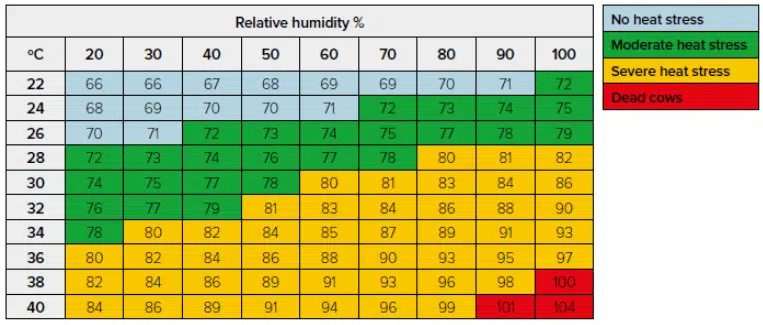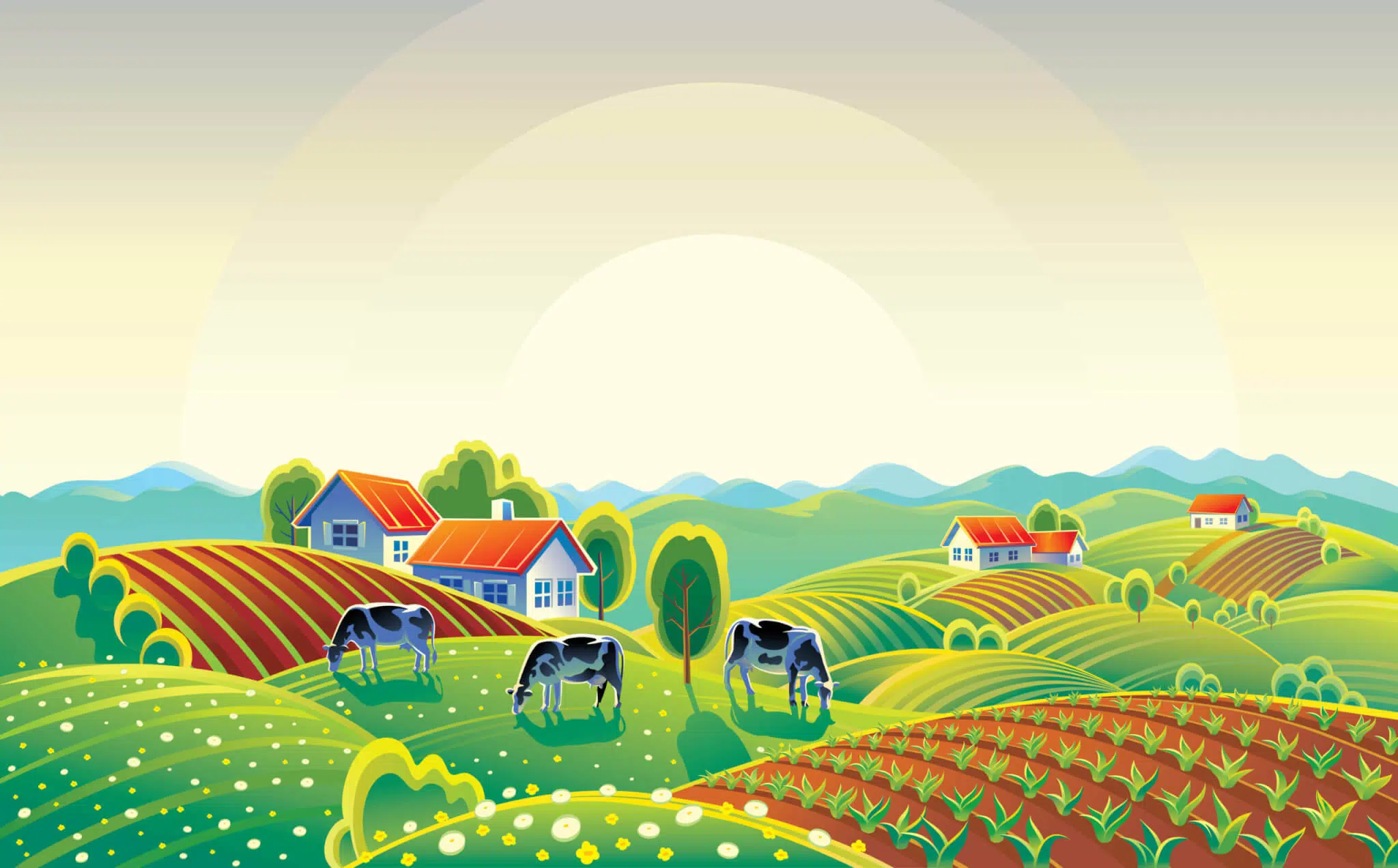Summer is very much my favourite season of the year. The aspects that appeal to me most are the longer days and the summer sun, although the latter is most likely a cow’s worst nightmare. So, the summer season is bittersweet, with the love I have for it overshadowed by the fact that dairy cows struggle with a very real health and production threat during the hotter months – heat stress. So, let’s talk about our summer strategy.
What is the THI?
Heat stress in cows is often perceived as coinciding with extreme temperatures in summer and not as the prolonged state it often is. The threshold for a dairy cow to start experiencing heat stress can be lower than we think, and their heat load a lot higher. Imagine carrying around a rumen that produces enough energy to power 100 x 860 W light bulbs!

The environmental conditions that determine whether cows will experience heat stress are relative humidity and temperature, although humidity is often overlooked as a contributing factor. A low daily temperature may not be enough to cause heat stress, but coupled with a high relative humidity, the heat stress threshold may be significantly lowered. Cows can still experience heat stress at temperatures as low as 26°C but a relative humidity of 50%. The temperature–humidity index (THI) accounts for both relative humidity and temperature to determine the heat stress threshold of cows (Table 1).

Heat stress solutions
The fact is our cows struggle during the summer season, so what can we do as part of our summer strategy to help them? Firstly, any form of heat abatement will go a long way in helping cows reduce their heat load. Whatever your dairy system, there are different ways to achieve effective heat abatement, it might just require some creativity on your part. Look back at these past articles on cooling cows for some ideas on effective heat abatement (The Dairy Mail, “Cow Comfort”, February 2018 and December 2018).
Secondly, nutritional strategies can aid the cow in dealing with the negative effects of heat stress. Promising nutritional strategies include the use of complexed zinc and chromium, as these two trace minerals work synergistically together. Zinc helps the cow minimise gut inflammation during heat stress through improved gut integrity, reducing the leaky gut phenomenon. It is this leaky gut that is the real milk thief during the summer season.
High levels of gut inflammation can cause the intestines to leak gut contents in the bloodstream. The body, in turn, mounts a huge immune response to deal with these foreign substances that have snuck in. Immune activation is a hugely energetic and expensive process and may require up to 1 kg of glucose every 12 hours to sustain this activated immune response (Kvidera et al., 2015). This is energy supplied to the cow that is not being used for milk production or reproductive functions.
Improving gut integrity and epithelium health before and during the summer has the potential to save energy otherwise used on immune activation. The other side of the one-two punch to tackling heat stress is supplementing a complexed source of chromium. Chromium supplementation increases insulin sensitivity in the cow, improving cellular glucose uptake from the stores already present in the blood.
During heat stress conditions, cows experience increased circulating levels of the stress hormone cortisol, which also acts as an immunosuppressant. By supplementing chromium during times of heat stress, we can reduce circulating cortisol levels, removing the immunosuppressant effect thereof, while improving energy balance in the cow. The use of complexed zinc and chromium together, essentially saves energy and improves the usage of the energy saved.
Switch gears and switch it up
The application of a nutritional summer strategy along with effective heat abatement can and will help your cows to beat the heat. Switch gears and switch it up to empower your cows to better deal with the challenges they face.
Download the full article in PDF format here, as published in the January 2022 issue of The Dairy Mail.
Technical adviser: Ruminants










